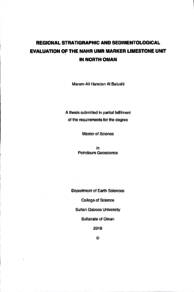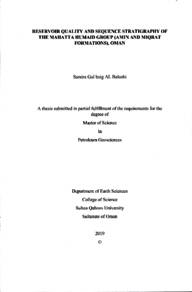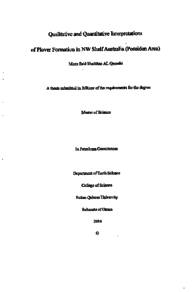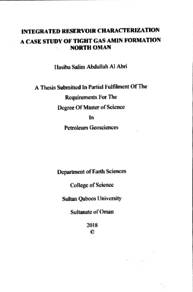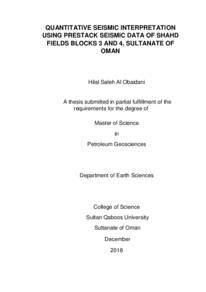Document
Regional stratigraphic and sedimentological evaluation of the Nahr Umr marker limestone unit in North Oman.
Publisher
Sultan Qaboos University
Gregorian
2018
Language
English
Subject
English abstract
The purpose of this project is to study the Nahr Umr Formation Marker limestone unit; regional stratigraphic distribution, sedimentological properties, facies characterization and accordingly, identification of the potential reservoir and its characteristics. The Nahr Umr Marker limestone unit belongs to Albian Nahr Umr Formation and separates the Lower Nahr Umr from the Upper Nahr Umr members. The Nahr Umr Formation is dominated by shale and is bounded by Natih Formation carbonate above, and Shuaiba Formation carbonate below. These two bounding carbonate formations; Natih and Shuaiba are considered the most prominent hydrocarbon reservoirs in Oman and Middle East. The presence of Nahr Umr Formation including the Marker limestone unit between those two productive formations and the Marker carbonate nature are the main drivers for this study, to assess the potential of this unit to act as a hydrocarbon reservoir in north Oman. The adopted methodology for this project includes (i) field sedimentological logging of the entire Nahr Umr Formation with particular emphasis on the Nahr Umr Marker limestone unit in the two studied locations; Jabal Madar (central-north Oman) and Wadi Bani Kharus (north-eastern Oman), (ii) gamma ray logging for the Nahr Umr Marker limestone unit in Jabal Madar, (iii) petrographic description of 14 thin-sections from Nahr Umr Marker limestone unit for both logged sections (iv) studying 34 drilled wells from north Oman using Petrel software for correlation and creation of regional depth and thickness maps of the Nahr Umr Formation, Upper Nahr Umr Member, Lower Nahr Umr Member and Marker limestone unit, (v) core description of the Marker limestone unit and (vi) petrographic description of 3 thin-sections from wells in north-west Oman (Lekhwair Field). In Jabal Madar, the Nahr Umr Marker limestone unit is ca. 4.2 m thick and is dominated by Orbitolinid wackestone to packstone (facies A) representing proximal mid ramp setting. Whereas in Wadi Bani Kharus, the Marker limestone unit is ca. 9 m thick and dominated by carbonate mudstones (facies D) representing doopor, distal outer ramp setting. The Nahr Umr Marker limestone unit is present in north Oman subsurface apart from western Oman, where it eroded against Lekhwair high. The Marker limestone unit is correlatable at an average depth of 1600 m with an average thickness of ca. 4.2 m. The Marker limestone unit varies in texture from mudstone to packstone with estimated (logs) average porosity of 18% (subsurface drilled wells) and conventional core analysis average porosity of 17%. Four facies of the Marker limestone unit are identified, where the most reservoir prone facies (facies A) being directly below the upper boundary (sequence boundary) of the Nahr Umr Marker limestone unit. The subsurface calibration of the Nahr Umr Marker limestone unit with outcrop properties verifies applicable facies correlation and indicates a good reservoir potential mostly in the north-west and south-west portions of the study area aligned with increased porosity trend.
Member of
Resource URL
Category
Theses and Dissertations

